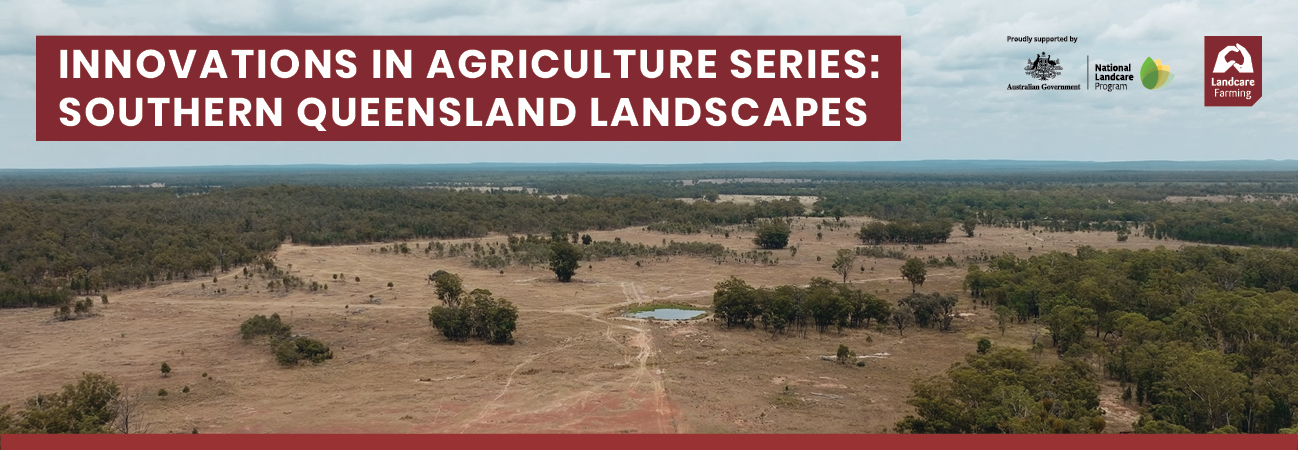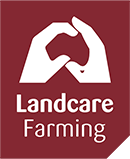
Exclusion Fencing and Land Rehydration Drive Drought Resilience and Profit
Jarrod and Sam Thomson have turned their Queensland property around in just three years with extensive restoration and rehydration works ready to support a productive grazing enterprise.
The couple purchased the 820-hectare ‘Gum Gully’, 14 kilometres south of Drillham in 2020, and with the support of Southern Queensland Landscapes, have worked to reverse damage caused by years of drought and overgrazing.
“Gum Gully is a located in an ecologically diverse area, with timber ranging from Mallee Box to Belah and sandalwood and a mix of native pastures. It had been really knocked around by the droughts, and our main goal was how to support recovery of the landscape” Jarrod said.
With drought-induced desertification and a growing Galvanised Burr (Sclerolaena birchii) infestation, Jarrod and Sam implemented rehydration works including contouring and establishing timber in gullies to catch sediment and reduce erosion risk, as well as landscape restoration works including the promotion of creekline and wetland species that helped to improve water filtration and stabilise dams. Using these techniques together with farm dams, the Thomsons were able to better manage water flow across the property.
To support the sustainable agricultural practices already in place, the Thomsons sought the support of Southern Queensland Landscapes for advice and funding assistance. They developed a plan which involved:
- Breaking up the compacted layers of soil with light ripping to allow water infiltration and improve pasture establishment;
- Improving biodiversity and soil health through planting multi-species deep-rooted pastures which naturally cultivate the soil; and
- Ecological thinning to address an over-dense layer of shrub preventing the regrowth of groundcover. A mulcher was used to maintain strategic shrubs and young trees, increase organic matter for soil condition and create space and light to enable preferred pasture species to compete. This has increased the grazing potential of the area and improved the biodiversity and environmental values.
By initially ensuring infrastructure was in place to minimise sheet erosion on sparsely vegetated pastures, the soil moisture profile benefitted through increased infiltration during the ensuing two years of high rainfall. The combination of these rehydration works and good rainfall along with pasture improvement, means they are now starting to see improved soil and pasture dynamics benefitting their livestock.
“Our goal is that soon the pastures will be mature enough and have established enough groundcover and seed bank to self-generate and support a permanent livestock enterprise,” Sam said. “Currently we’ve just got a handful of goats on the place. They’re really here as a weed management tool, but we project in the next 18 months to two years that we will have saved enough of a vegetation bank to reintroduce cattle and use a cell grazing system.”
The combined works, in conjunction with the drought breaking, have already achieved fantastic environmental outcomes for the property, with the Thomsons reporting that birdlife has returned to the area ten-fold under their ownership including increased populations of ducks, waterhens, and galahs.
For more information on Southern Queensland Landscapes and how they can help you with funding and sustainable agricultural innovation, please visit: https://www.sqlandscapes.org.au/
This case study was produced as part of the Landcare Farming Innovations in Agriculture Series. Supported by the Australian Government’s National Landcare Program, the Landcare Farming Innovations in Agriculture Series is managed in partnership by Landcare Australia and the National Landcare Network.
Explore the following resources to find out more about managing similar environments:
More Innovations in Agriculture stories from Southern Queensland Landscapes:



